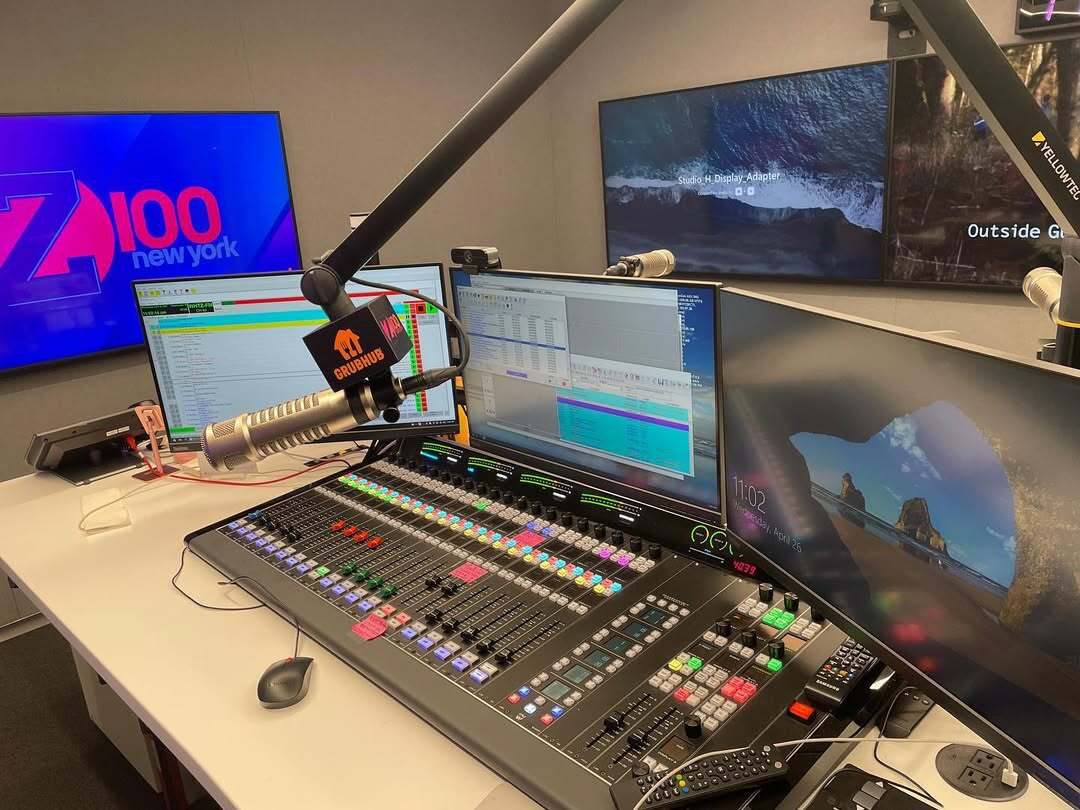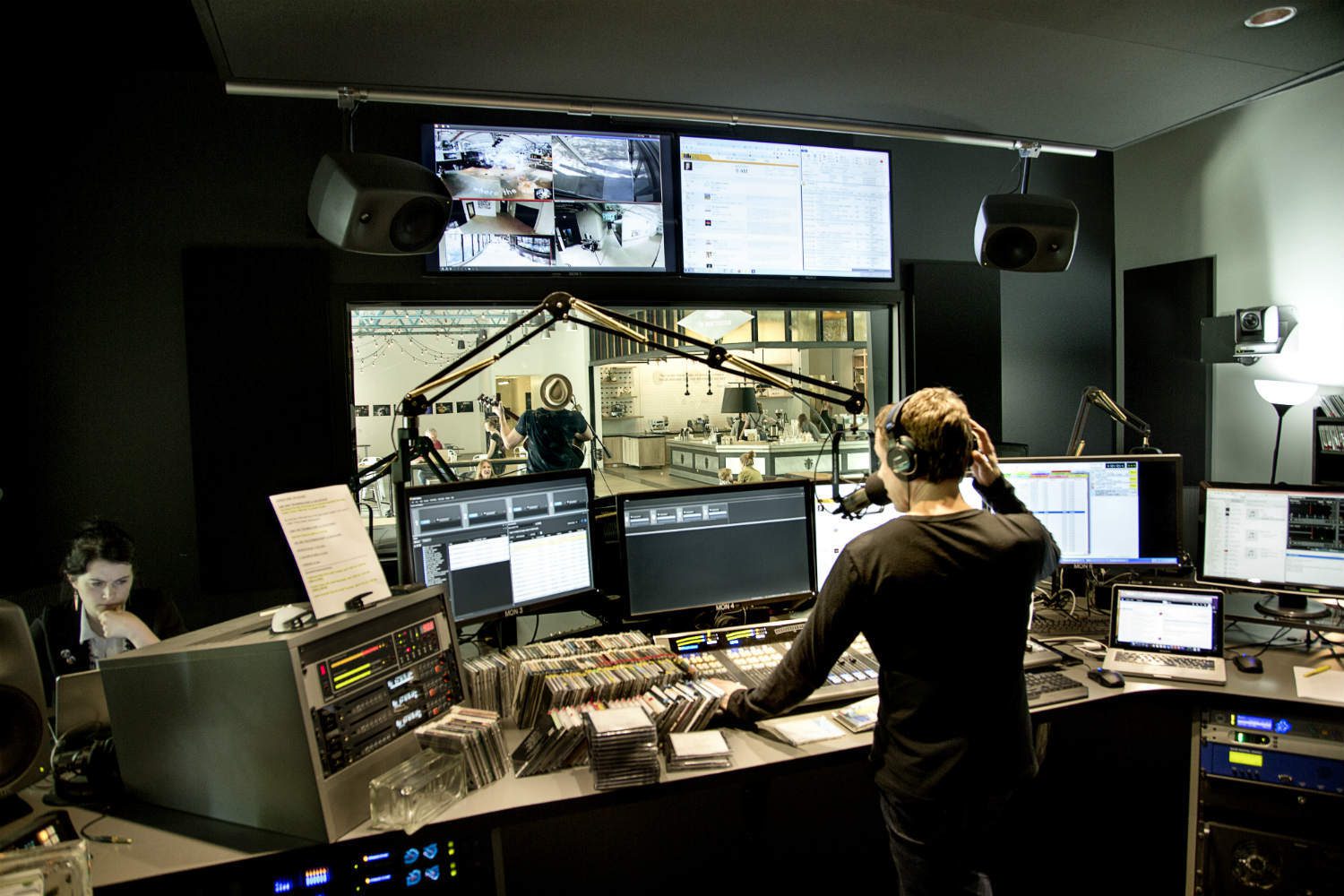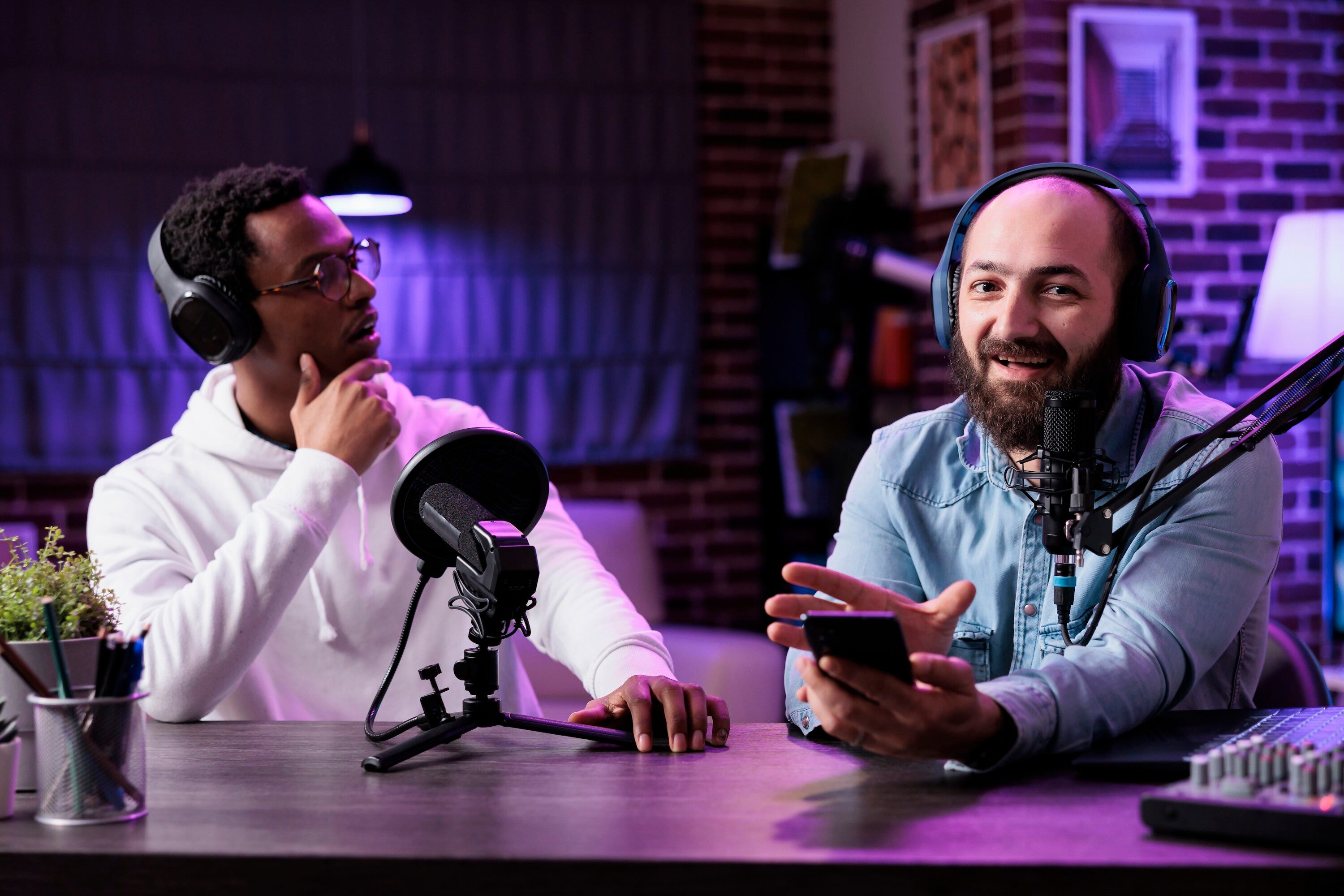Need advice? Let's talk.
Get straightforward guidance from your broadcasting partner. Schedule a call to chat with the team about your radio station.
Book DemoNo Money? No Problem: How to Grow Your Radio Station on a Budget
Want to grow your radio station but have no budget? Steal our 5 proven, free marketing strategies. Get more listeners today.

You have a great station, passion, and incredible music taste. What you don't have is a marketing budget.
Growing a radio station is hard and growing it with no money is even harder. You’re not just the host; you’re the producer, the music director, the social media manager, and the marketer. You need to find new listeners and sound professional, all of this while also hosting your show, managing your playlists, and paying the bills.
Here’s the good news: You do not need a big budget. You need a smart strategy. Your station's growth depends on creating content that works for you long after you've gone off-air. It's about building systems that get more listeners for your station. Your focus must be on four key areas: your social media, website, on-air quality, and your community.
Here are five powerful strategies to grow your radio station that cost nothing but your time and effort.
1. Build a Social Media Growth Engine
Most struggling stations use social media to post a "Listen Live!" link twice a day. This gets two likes (one from you, one from your mum) and feels like a total waste of time.
That's because… It is.
Your social media is a listener growth engine, not a billboard, it should bring value to those who follow you outside of your live show. Why should someone follow you if they aren't already a listener? You have to give them a reason.
This is how you attract people who have never even heard of you. The goal is to create shareable content that makes your fans do the heavy-lifting for you.
A great place to start is the 4-1-1 rule for social media:
- 4 pieces of content from other sources that your audience will love (e.g., music news, articles, content from artists you play).
- 1 piece of original, non-promotional content (e.g., a poll, a behind-the-scenes photo, a trivia question).
- 1 piece of promotional content (your "Listen Live!" link or a teaser for a guest).
This framework ensures you're providing value 90% of the time and only "selling" 10% of the time.
Here is that same section, now with the external links woven directly into the text to show the examples in action.
How Radio Stations Practice The 4-1-1 Rule:
You might think this rule is just for small stations, but major commercial players use this exact principle to keep their massive audiences engaged.

Let's look at a station like Z100 in New York. Their feed isn't just a wall of "Listen Live!" links, it's carefully curated to mix content that is designed to feel like a hub.
- The 4 (Value & Shared Content): Their feed is an array of music and celebrity news, like articles on artists' song secrets or celebrity gossip that interests their audience. This is the value that keeps followers coming back for news and gossip.
- The 1 (Original, Non-Promotional): You'll see this all over their hosts' social pages, like the Elvis Duran and the Morning Show's hub or their Instagram feed. This is where they post behind-the-scenes photos, personal stories from the hosts, and daily show highlights, all of which build their human connection.
- The 1 (Promotional): Sprinkled in between all that value, you'll find the promotional ask. This is their page for Z100's Jingle Ball, urging followers to listen in order to win sold-out tickets.
Because they've already provided that much needed value and human connection, their followers are far more receptive to their promotional posts when they do appear. They are following the 4-1-1 rule perfectly: provide value 90% of the time, and you earn the right to sell 10% of the time.
Your Content Toolkit:
- Go Big with Short-Form Video: Audiograms are good, but Reels and TikToks are better. TikTok has revolutionized how people discover music and personalities. Don't just post a static image with audio. Film yourself: show your studio, your vinyl collection, or your reaction to a new track. On Instagram, Reels are the most engaging post type.
- Create Shareable "Micro-Content":
- Trivia & Polls: Spark debate. "What is the best album of the 90s?" "Best movie soundtrack: Top Gun or Dirty Dancing?"
- Behind-the-Scenes: A photo of your studio setup, your guest signing the "wall," or your "messy desk" reality. This builds a human connection.
- Artist Spotlights: Create simple graphics (using a tool like Canva) highlighting an artist you're playing this week. Tag the artist—they might share it!
- Engage Relentlessly: When someone comments, reply to them. More than half of internet users say memorable brands are the ones that respond in the comments. This shows you're listening and turns passive followers into active community members.
A good social plan turns followers into fans. Those fans share your content and their followers see it and ask, "Who is this?" Now you have new listeners. That's the engine.
2. Turn Your Website into a New Listener Magnet
Your radio station website should be the "front door" for new listeners, not just a glorified play button.
If your site has no content, Google has no idea who you are. When someone searches for "best 90s rock deep cuts" or "new indie bands from Manchester," you are invisible. You’re missing out on a 24/7 stream of new, highly-qualified listeners who are actively searching for the exact content you play.
You need SEO-optimised content. SEO (Search Engine Optimisation) is just the practice of writing about topics people are actually searching for.
Stop thinking of your site as just a player and start thinking of it as your station's digital hub.
The SEO Machine in Practice: KEXP Radio
A great real-life example you can take a page out of their books is KEXP in Seattle.

They are a world-renowned radio station focused on alternative, indie, and music discovery. Their website is a massive digital hub for music lovers. This is how they capture a global audience:
- Their blog is a priority: KEXP's Read section is a full-fledged music publication. They publish daily content that their ideal listeners are actively searching for, including in-depth album reviews, artist features, and music news about artists their listeners are interested in.
- They use their On-Air content in multiple ways: KEXP is famous for its Live on KEXP in-studio sessions. They don't just broadcast these; they film them, host them on YouTube, and most importantly, they create dedicated pages for these sessions on their site. This is a perfect execution of transcribing and repurposing on-air content. When someone searches for "live session with artist name here," KEXP dominates the search results.
- They curate "Best Of" lists: Their Song of the Day feature is a brilliant example of a "best of" list. It's a simple, repeatable piece of content that attracts new listeners every single day who are looking for music recommendations.
- The Call-to-Action is everywhere: On every single one of these blog posts, reviews, and session pages, a persistent Listen Live player is visible. They turn the traffic they earn from Google into active, new listeners for the station.
They are the perfect model of a station that makes the most out of their content.
Your Turn to Sign Post With A Website:
- Start a Blog: This is the single most effective way to get found on Google. Write blog posts that your ideal listener would search for.
- If you play 90s rock: "The 10 Most Underrated 90s Rock Albums," "What Happened to the Band 'Eve 6'?"
- If you play electronic music: "A Beginner's Guide to Techno," "5 New DJs You Need to Hear This Month."
- If you're a local station: "The 5 Best New Bands in Our City," "Interview with [Local Venue Owner]."
- Transcribe Your Best Interviews: Take your best on-air interviews (see Tip 3) and publish them as blog posts. This turns audio content into text that Google can index.
- Create "Best Of" Lists: Write about the "Top 10" albums, songs, or artists in your niche. People love lists, and they are highly searchable.
- Add a Call-to-Action (CTA): At the end of every single post, add a clear CTA: "Love this kind of music? Hear it 24/7 on [Your Station Name]. Listen live now!"
This content works for you while you sleep. A blog post you write today can attract a steady stream of new listeners for years to come, something we call evergreen content.
3. Use Professional Interviews to "Steal" Audiences
Great interviews make your station sound professional and are a powerful growth tool. But if you're not prepared, you ask flat, boring questions ("So... tell us about your new album"). The interview is a bit of a drag and the guest forgets about it the second it's over.
You just lost a massive growth opportunity.
Professional interview prep is a free marketing tool. When you conduct a great, well-researched interview, the guest feels smart, understood, and impressed. They will be excited to share that interview with their audience.

Their entire fanbase sees your station and therefore, you grow.
The "Before, During, After" Method:
- Before: Do your homework. Don't just read their Wikipedia page. Find an old interview, listen to their B-sides, and prepare 10 insightful questions that go beyond the obvious. Ask why they made a certain choice, not just what they did.
- During: Listen! Don't just wait for your turn to talk. Be present. Your goal is a conversation, not an interrogation. This is how you "talk with your audience, not at them."
- After (The Most Important Part): This is where the growth happens.
- Immediately after the interview, thank the guest.
- The next day, send them an email with easy-to-share "assets."
- Create a 1-minute audiogram or video clip of the best moment from the interview.
- Create a "pull quote" graphic with their best line.
- Tag them in all social media posts and say, "Loved this chat with @GuestName! We talked about [Insightful Topic]."
You've made it effortless for them to promote you. You're not just asking them to share; you're giving them high-quality content for their own feed.
4. Build a Real Community (Not Just an Audience)
Social media is for attracting new people. A community is for keeping them.
You need to turn passive listeners into loyal, active fans. Why? Because loyal fans are your best marketers. They tell their friends to listen, plaster your name in forums, and become your radio evangelists.
By stopping just broadcasting at your listeners and starting talking with them, you give them a reason to feel like they are a part of the station, not just consumers of it.
How to Build Your "Clubhouse":
- Create a Dedicated Space: A simple, free Facebook Group or Discord server works perfectly. This is your station's hub.
- Make it Exclusive: Use this group to give them things they can't get anywhere else.
- Run Polls that Matter: "Which artist should we feature for our next 'A-to-Z' weekend?" "Help us pick the new intro jingle!"
- Get Show Ideas: "We're doing an 80s 'One-Hit Wonders' show. What songs must we play?".
- Host Competitions: Team up with a local partner (see Tip 5) or an artist to give away a t-shirt or some vinyl. This is a classic way to draw people in.
- Expand Your Reach: Don't just wait for people to find you. Go where they already are.
- Join Forums: Find Facebook Groups, subreddits, or old-school forums related to your niche and join the discussion. Don't spam your link. Be a helpful, insightful member of that community. People will see your profile, get curious, and check you out.

When listeners feel like they have a stake in the station's success—when they feel heard—they will not tune out. You've given them a reason to come back every single day.
5. Master the Art of Free Cross-Promotion
You are not the only small operation with no budget, your city, or your online niche, is full of people just like you: coffee shops, record stores, local artists, podcasters, and entrepreneurs.
Use this to your advantage, it is classic guerrilla marketing, and it works.
Offer a simple, irresistible trade. You are offering them access to your audience (your listeners) in exchange for access to theirs.
Your Trade Toolkit:
- The Local Deal (In-Person):
- Offer: "I will record and play a free 30-second ad for your coffee shop on my station."
- Ask: "In exchange, will you play my station in your shop and put my flyer on your counter?"
- You can do this with record stores, cafes, independent bookshops, and more. You can even put up posters and flyers in local bars, clubs, or community centres.
- The Digital Deal (Online):
- Offer: "I'll promote your band's new single on my show and social media all week."
- Ask: "In exchange, will you post about my station on your social media and tell your fans to tune in?"
- This works with bands, artists, podcasters in your niche, and even influential bloggers.
This is free advertising for both of you. It builds powerful local or niche connections and puts your station name in front of a brand new, targeted audience for free.
How to Grow Your Station, Not Your Workload
These five strategies work, they are proven methods, but they all require a huge amount of time.
Running a station with no budget isn't a part-time job; it's more like five full-time jobs. You have to be a social media manager, an SEO writer, a guest researcher, a community manager, and a sales rep... all before you even go live.
This is where you need an assistant, but if budget is your main concern, there is no way you can accommodate it to hire help. That’s until now.
ShowProducer is your personal AI producer. It’s the shortcut to running a professional station by handling the growth-oriented work a producer would normally do. It takes the pressure off so you can focus on what you love: the show.
5 Growth Shortcuts - Turn "To-Do", to "Done"
You know that content generation is a thing, but this is about attracting and retaining new listeners with a smart, consistent plan. ShowProducer builds that plan for you.
Here are some examples of how ShowProducer can be implemented to your radio station’s growth strategy:
1. Create a social media plan:
- Input: "I run a classic rock station. Give me a 5-day social media plan to attract new listeners."
- Output: The assistant provides a full plan:
- "Monday: 'Music History' post about a famous album released this week."
- "Tuesday: 'Trivia Tuesday' poll about a classic rock band."
- "...and so on for the rest of the week."
2. Create SEO content:
- Input: "Write an 800-word SEO-optimised blog post. The topic is 'The Best One-Hit Wonders of the 1980s'."
- Output: The assistant generates a full article, formatted for your website. It is ready to copy, paste, and publish.
3. Prepare for an interview:
- Input: "I am interviewing author Jane Smith. She wrote a new book called 'City of Steel.' Give me 10 insightful questions."
- Output: The assistant provides a list of research-backed questions:
- "Your book 'City of Steel' is set in 1950s Pittsburgh. What drew you to that specific time and place?"
- "The main character works in a steel mill. What kind of research did you do to capture that environment?"
4. Manage your community:
- Input: "Give me 5 engaging poll questions for my station's Facebook Group. My station plays 80s pop."
- Output:
- "Best movie soundtrack of the 80s: 'Top Gun' or 'Dirty Dancing'?"
- "Which artist had the most influence: Madonna or Michael Jackson?"
5. Find partners:
- Input: "Write a short, professional email to a local coffee shop. I want to offer them free on-air mentions in exchange for them playing my station in their store."
- Output: A perfect, professional email template ready to send.
These are just a few quick tips, there is a lot more that ShowProducer can do for your station. Interested? Check out our walkthrough video below:
Don't Burn Out. Build Smart.
You don't need a big budget to grow your radio station. You need to be smart, consistent, and professional.
Growing a station from scratch is a marathon, not a sprint. The passion project trap gets you when you try to do everything at once and burn out. Don't fall for it. Instead, pick one of these strategies. Just one.
- This week, just focus on building a social media engine.
- Or, just focus on writing one SEO blog post.
- Or, just focus on booking and preparing for one great interview.
Growing your station doesn’t happen with magic, it grows by building one small, smart system at a time. It grows when you turn your passive listeners into an active community, and when you stop being just a broadcaster and start being a marketer.
Focus on what only you can do: connect with your listeners and create a great show. For the rest, let ShowProducer be the assistant you thought you couldn't afford. It's the shortcut to getting the SEO articles written, social media planned and interview questions researched. ShowProducer handles the workload, so you can get back to the passion of being a host.



